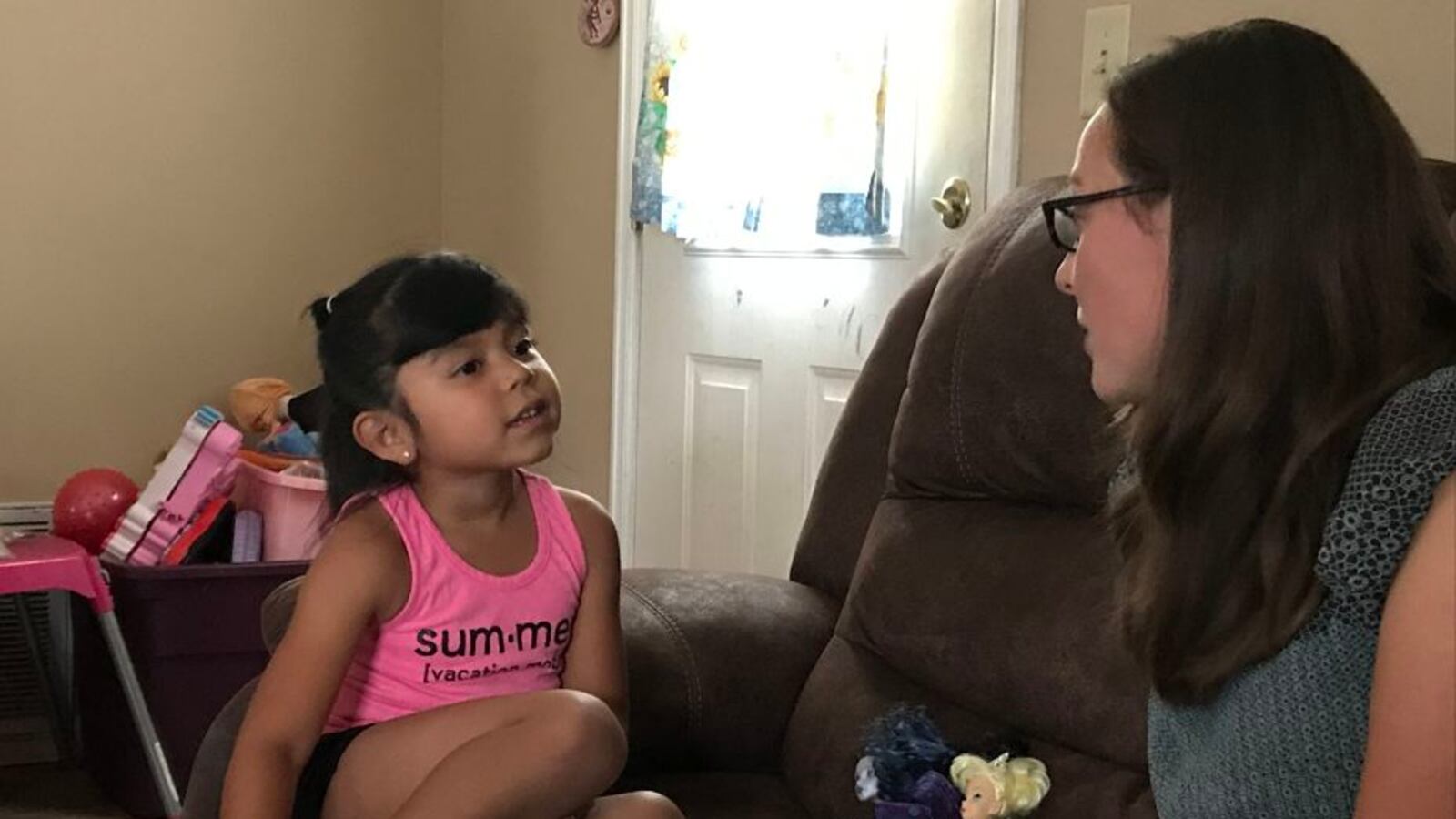Six-year-old Naylin Lopez hopped up on the couch in her family’s living room. It was an hour after school and her first-grade teacher was visiting. As Naylin arranged her Barbies in a neat row, smoothing their dresses and stroking their hair, her teacher turned to her.
“Naylin, I have a question for you,” said Annemarie Minor, her teacher at Munroe Elementary in southwest Denver. “What would you like to do when you grow up?”
Naylin flashed a smile full of baby teeth. “I want my mom to pay me 20 bucks,” she said.
Naylin’s mother, Minor and the two other teachers who’d accompanied her on the visit laughed.
With a little more prodding, Naylin said she wants to be a teacher. Her 7-year-old cousin, Aaliyah, a second-grader who was in Minor’s class last year, said she wants to work in a restaurant. She excitedly told the teachers about how she learned to cut tomatoes in her cooking class and how she’s growing a pumpkin plant outside.
The Thursday afternoon visit was one of hundreds conducted by Denver Public Schools teachers in the weeks since school started. The aim of the growing Parent Teacher Home Visit Program is to build relationships between educators and families in the hopes those bonds will benefit students. The 92,000-student district has an ambitious goal this year: 13,000 visits.
Modeled after a program in Sacramento, Calif., Denver’s home visit program is now the second-biggest in the country behind only D.C. Public Schools, according to the district. Last year, Denver educators conducted 11,120 visits, said program manager Yoni Geffen.
That’s magnitudes more than when Tom Boasberg became superintendent in 2009. He recalled getting an email from a teacher at Fairview Elementary inviting him to come along on a home visit. Fairview, which is located in the low-income Sun Valley neighborhood on the city’s west side, was the only DPS school doing them at the time, Boasberg said.
“I remember saying, ‘That sounds great, fantastic. I’ll send you an email (to find a time),’” Boasberg said. “A month later, he sent me an email saying, ‘Haven’t heard back from you, but you really ought to come check out this home visit program.’ I was so underwater with everything else I had to do. But given his enthusiasm, I was like, ‘I gotta do it.’”
So Boasberg tagged along as the teacher visited the home of a refugee student.
“It was striking to me how much impact it had on both the parents and the teacher,” Boasberg said. “Each of them came in wanting to have a strong partnership with the other.”
In the years since, the program has grown to include 124 district-run elementary, middle and high schools. Teachers are paid $20 per visit, while paraprofessionals are paid $15. A district spokeswoman said DPS spent just under $629,000 on the program last year.
Boasberg said it’s money well spent. Research has shown strong parent engagement can lead to increased student success. Denver is one of four school districts nationwide participating in a study to better understand the effects of home visits and the potential for them to disrupt biases.
The protocol of the DPS home visits is simple: Teachers ask families about their hopes and dreams for their students. It’s a conversation devoid of test scores, discipline data, grades and spreadsheets, and one that Boasberg describes as “very powerful.”
When Maggie Latorre, an art teacher at Munroe who visited Naylin’s home alongside Minor, asked Naylin’s mother her hopes for Naylin and Aaliyah, she was quick to answer.
“For them to be successful and pick a career they enjoy,” Sonia Estrada said.
As the visit wrapped up, the teachers stood and thanked Estrada for her time. They took a selfie with Naylin and Aaliyah, and waved goodbye to the family’s pet turtle, Buddy. The girls followed their teachers out to the porch, where Aaliyah pointed out her pumpkin plant growing in a pot.
Minor and Latorre said the visits are crucial for building trust with families and learning about their students. For instance, Minor said her first-graders would be doing a writing lesson the next day. If Naylin is stumped on what to write about, the teacher will have a suggestion ready: Buddy.
“It really changes the dynamic at school,” says Latorre, a home visit enthusiast who went on more than 160 visits last year and had another lined up Thursday afternoon two doors down.
“The kids feel special that my teacher cares enough to visit me after school,” Minor said.
“It spreads like wildfire,” Latorre added. “They all want to be next.”

